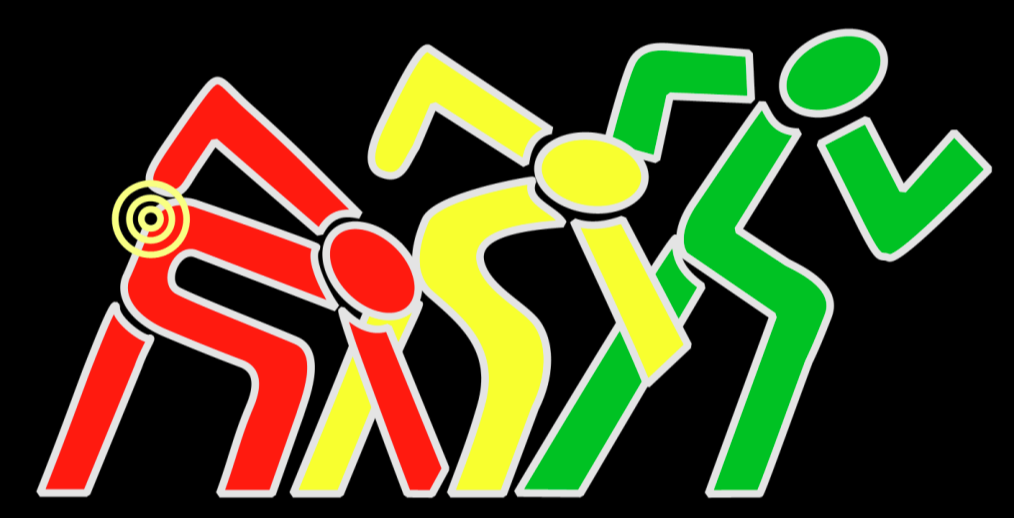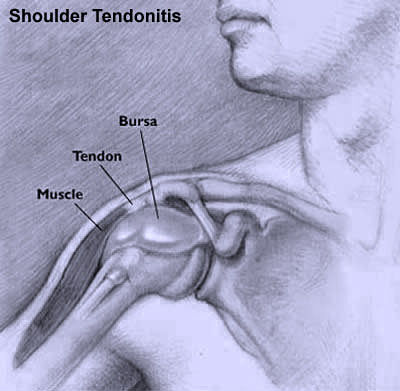
Injury Therapy
Gilly Bharath, a qualified and respected Injury Therapist is now available at the Bracknell Rugby Football Club.

Gilly Bharath, a qualified and respected Injury Therapist is now available at the Bracknell Rugby Football Club.
These conditions are closely related and may occur alone or in combination. If the rotator cuff and bursa are irritated, inflamed, and swollen, they may become squeezed between the head of the humerus and the acromion. Repeated motion involving the arms, or the aging process involving shoulder motion over many years, may also irritate and wear down the tendons, muscles, and surrounding structures.
Tendinitis is inflammation (redness, soreness , and swelling) of a tendon. In tendinitis of the shoulder, the rotator cuff and/or biceps tendon become inflamed, usually as a result of being pinched by surrounding structures. The injury may vary from mild inflammation to involvement of most of the rotator cuff. When the rotator cuff tendon becomes inflamed and thickened, it may get trapped under the acromion. Squeezing of the rotator cuff is called impingement syndrome.
An inflamed bursa is called bursitis. Tendinitis and impingement syndrome are often accompanied by inflammation of the bursa sacs that protect the shoulder. Inflammation caused by a disease such as rheumatoid arthritis may cause rotator cuff tendinitis and bursitis. Sports involving overuse of the shoulder and occupations requiring frequent overhead reaching are other potential causes of irritation to the rotator cuff or bursa and may lead to inflammation and impingement.

Signs
Signs of these conditions include the slow onset of discomfort and pain in the upper shoulder or upper third of the arm and/or difficulty sleeping on the shoulder. Tendinitis and bursitis also cause pain when the arm is lifted away from the body or overhead. If tendinitis involves the biceps tendon (the tendon located in front of the shoulder that helps bend the elbow and turn the forearm), pain will occur in the front or side of the shoulder and may travel down to the elbow and forearm. Pain may also occur when the arm is forcefully pushed upward overhead.
Diagnosis
Diagnosis of tendinitis and bursitis begins with a medical history and physical examination. X rays do not show tendons or the bursae but may be helpful in ruling out bony abnormalities or arthritis. The doctor may remove and test fluid from the inflamed area to rule out infection. Ultrasound scans are frequently used to confirm a suspected tendinitis or bursitis as well as rule out a tear in the rotator cuff muscles. Impingement syndrome may be confirmed when injection of a small amount of anesthetic (lidocaine hydrochloride) into the space under the acromion relieves pain.
Treatment
The first step in treating these conditions is to reduce pain and inflammation with rest, ice, and anti-inflammatory medicines such as aspirin, naproxen (Naprosyn), ibuprofen (Nurofen, Advil, Motrin, or Nuprin), or COX-2 selective inhibitors (Celebrex, Vioxx, or Mobic). In some cases the doctor or therapist will use ultrasound (gentle sound-wave vibrations) to warm deep tissues and improve blood flow. Gentle stretching and strengthening exercises are added gradually. These may be preceded or followed by use of an ice pack. If there is no improvement, the doctor may inject a corticosteroid medicine into the space under the acromion. While steroid injections are a common treatment, they must be used with caution because they may lead to tendon rupture. If there is still no improvement after 6 to 12 months, the doctor may perform either arthroscopic or open surgery to repair damage and relieve pressure on the tendons and bursae.
The brand names included here are provided as examples only. If a particular brand name is not mentioned, this does not mean or imply that the product is unsatisfactory.
Posture and sleeping positions have been known to alleviate shoulder pain, possibly shoulder problems. For example, sleeping on one’s side can cause pain due to prolonged compression of the shoulder joint. Sleeping on one’s side without support can create or add to shoulder pain.[5]
Rotator cuff tear
The term “rotator cuff” refers to a group of four tendons that blend together as they attach to the upper end of the arm bone (humerus). Normally these tendons transmit the force of muscles originating on the shoulder blade (scapula) to the arm providing motion and stability. The most commonly affected tendon is that of the supraspinatus muscle. Defects in the rotator cuff can come from an injury (cuff tear) or from degeneration (cuff wear). The degree to which a tendon is reparable depends on its quantity and quality. Degenerated tendons are often frail and retracted and may not be amenable to repair. Individuals that are elderly, smokers, or those having had cortisone injections often have weaker tendon tissue that fails without a significant injury. By contrast those whose tendon was torn by a substantial fall often have good quality tendon that can be repaired if surgery is performed promptly after the injury. The symptoms of rotator cuff disease include difficulty lifting the arm. Repair of a rotator cuff requires that the tendon be securely anchored to the bone at surgery and that the repair be protected for several months during healing. Further information that should be considered in the treatment of rotator cuff tears can be found at University of Washington School of Medicine.